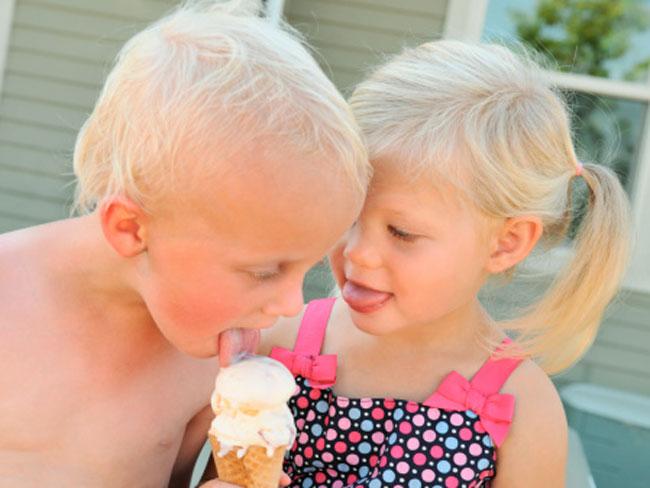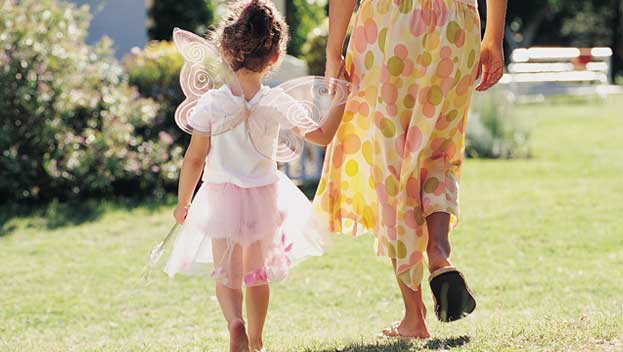I’m ushering my daughter Madeline into preschool. She’s in a new floral dress she’s quite pleased with, and she’s deeply intent, in her four-year-old way, on manoeuvring through the halls without crinkling it.
“Hi, Madeline,” says a girl named Lucy. So engrossed is my daughter in the Project of Her Dress that she says nothing, not even looking up.
“Madeline!” I hiss, in that patented mother way, to sound as if I’m not really hissing. “Say hello back!”
It isn’t just a matter of manners – Lucy is a shy kid who is gingerly reaching out, and I want my daughter to recognise this emotional risk-taking and reward it.
At my tug, Madeline looks up, sees Lucy, gets it, and finally utters, “Hi”. Not the most inspiring “Hi” but at least a decent “Hi”. Lucy visibly relaxes, as do I.
It’s a small but telling moment. Like many parents, what I want most for my children, after health and safety, is for them to be considerate of others. Never mind if they don’t grow up to be Olympians, movie stars or Nobel Prize winners (although I’ll have a dress ready). Just let them be good people.
Kindness has to be taught: so says Barbara Campbell, director of Madeline’s preschool. “We teach children to read, we teach them maths. But we sometimes forget that we also need to teach them kindness.”
One day I watch Barbara read The Ugly Duckling to a group of kids. They hang on every word and plot-turn. Afterwards, Barbara asks them, “Is it nice to make fun of people who look different? What can you do to make someone different feel welcome?” Hands go up, ideas are called out: “Ask their name! Share a toy!” In practice, of course, kindness is more complex.
That complexity is played out every day in the preschool where my two daughters, Madeline, 4, and Susannah, 3, are students. Out in the playground, the kids explode with energy. They jump, yell and careen, seeming to run into everything headfirst, stunt dummy-like.
How do you teach kindness within this wild hubbub? I ask teachers Jo Acree and Hannah Lavenburg what their secret is. Mild-mannered Jo, who has taught preschool for more than 20 years, gives a response that is modest, even Zen. “Teaching kindness? I think I’m still learning how,” she smiles.
The first lesson I learn from Jo is, in fact, a Zen-like one: the importance of keeping your cool and modelling the behaviour you want to teach.
For many of the preschoolers this morning, the accepted mode of communication seems to be Outdoor Voice as they all vie for supremacy, throwing kickboxing feints at each other, yelling “Spider-Man!” and “Power Ranger!” That is, until circle time, when the kids are seated and somewhat quieter. Still, there’s a lot of wiggling and 180-degree twitches (“Who touched me?”). But Hannah and Jo aren’t instantly reactive, as I would be. They persist in the day’s agenda, calm in the face of the storm.
They also treat each other well. When Hannah realises she’s forgotten to bring over stickers for the calendar, Jo leaps to her feet to fetch them. “We’re kind to each other,” Hannah says of their seamless teamwork. “It’s important to show consideration not just to children, but between adults too.”
I have an uncomfortable flash to earlier that day when, running out the door, I’d bellowed at my husband: “Put the rubbish out!” Our spousal interactions aren’t unkind; it’s just that, with the hectic pace of modern life, they can take on the feel of emergency instructions shouted in a snowstorm.
But at what point do kids pick up these habits? Jo asks each child, in sequence, to lead the group in a song. Madeline chooses You Are My Sunshine. Nathan chooses We Wish You a Merry Christmas. Gary chants an original composition: “I’m a skeleton / I’m a skeleton / I’m a skeleton/Look at me drip blood!”
Jo listens, then remarks, “That’s interesting, Gary. But like we said last week, skeletons are bone and bone is hard, like a rock. There’s no blood in bones.” Gary listens to the spontaneous science lesson and studies Jo. It takes time and a kind heart to know a child so well, to meet him at his level and understand his vocabulary.
As the morning wends on I see that, for these boys, the land of skeletons and superheroes is not necessarily a bad place to be. At lunch, Gary and Nathan are chatting. “I’m a skeleton!” says Gary. “I’m a vampire!” says Nathan. They nod agreeably, satisfied with the conversation, munching sandwiches in happy fellowship.
In general, though, lunchtime tends to be a rock ’n’ roll performance featuring one dominant character: today it’s Seth, spitting out juice. The hierarchy is Clown, Audience for Clown and Clown-in-the-Wings Impatiently Waiting Turn. Jousting for territory is a constant.
A Lego collection belonging to Jo’s now-adult son is truly impressive, containing, oh, about 10,000 pieces. Still, conflict soon breaks out between Tom and Robert. “Me first!” “You always –” “You’re not my friend!” “You’re not mine either!”
Jo separates the boys, calms them down and asks what happened. The problem is that while there are tiny silver, red, green and blue helmets, there’s only one tiny black helmet with a yellow visor. Nathan offers his silver helmet to no avail.
With infinite patience, Jo determines that since Tom had the helmet first, he can play with it for five minutes – “that’s until the big hand touches the cheetah” – then it’s Robert’s turn. “But he always gets it first!” Robert wails. “Fine,” Tom says, suddenly giving the helmet up. It seem he’s finally just bored with the topic.
But Jo sticks with the original plan. She gives the helmet back to Tom, saying: “To let Robert have it now would be giving him a prize for yelling.” Robert continues snuffling but, under Jo’s tutelage, somehow manages to make do with the remaining 9999 Lego pieces. When the big hand hits the cheetah, Jo gives Robert the helmet, hugs him and says, “I’m proud of you.”
The next day it’s Robert who barrels in with unexpected help. Mid-afternoon, Madeline becomes weepy when it seems she’s losing a tussle over a monkey-in-a-barrel game. Robert intercedes with the gruff tone of a cartoon dog policeman. “Hey!” he cries. “That’s not fair – Madeline had it first!”
Has he internalised a lesson from the black helmet incident? His style isn’t pretty, but Robert seems to be getting the concept of fairness, and is extending it for the benefit of others. It is, in its bare bones, an act of kindness.
The last lesson I learn about instilling kindness is that it’s crucial to understand larger forces that may be at play, the root causes that prevent a child from being kind. “For instance,” says Barbara, “if a child is having difficulty in the morning, my question is, ‘Did she have breakfast?’ If not, out comes a snack.” Other problems aren’t as easily solved. “This being the last week of preschool,” Hannah muses, “there are a lot of unresolved emotions in the air. The older kids are afraid starting kindergarten means losing friends.”
Just this morning, Seth had been telling his classmates either “You’re my friend!” or “You’re not my friend!” The latter fate fell upon Nathan, who began crying. Barbara stepped in, telling Seth, “Nathan’s crying because he wanted to play and you said no. Can you think of a solution?” Seth then suggested a game everyone could play. “We can give them rules,” Barbara comments, “but rules only hold as long as adults are around to enforce them. It’s better to help kids develop a conscience about the feelings of others.”
Hannah now gathers the children and reads them Will I Have a Friend? by Miriam Cohen, a book about a boy starting kindergarten. The kids listen intently. No fidgeting, no wiggling. You can hear a Lego helmet drop. For this moment, at least, Hannah has cracked the code.
When the official goodbyes begin, there’s lots of hugging, some loud smacky kisses and the usual circus-ring comedy. But under Jo and Hannah’s gentle guidance there are moments of real sweetness. “I hope we can still play next year,” Robert tells Tom, the helmet incident long forgotten
Looking at their beaming teachers, I feel they deserve a medal. Kindness begins with one’s first teachers in life – parents, caregivers, preschool teachers – and consistency in teaching kindness takes the patience of a saint, particularly when the rewards, day to day, aren’t always apparent
On my way to the shops that afternoon, I consciously take all the time we need to let my two princesses arduously negotiate their car seats: how they want to buckle them, who gets to hold the stuffed pig, window up or down a little bit, and all the earth-shatteringly important details of the kingdom, fine-tuning the art of when to rule with a generous hand and when to defer gracefully.


